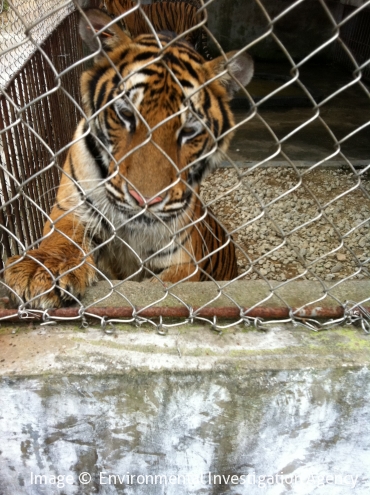The wild tiger has been roaming the planet for over two million years.
It is a sad fact that there are now more tigers in captivity than there are in the wild. In 1900 there were 100,000 tigers in the wild. Today, there are fewer than 5,000 remaining across 11 countries: Indonesia, Malaysia, Bangladesh, Bhutan, China, India, Myanmar, Nepal, Russia, Thailand and Vietnam.
Of the world's remaining tigers, there are six existing subspecies:
- The Amur Tiger (Panthera tigris altaica) - occur in the Russian Far East and north-eastern China
- The Northern Indochinese Tiger (Panthera tigris corbetti) - occur in Indochina, north of the Malayan peninsula
- The Malayan Tiger (Panthera tigris jacksoni) - occur in Peninsular Malaysia
- The Sumatran Tiger (Panthera tigris sumatrae) - occur in Sumatra, Indonesia
- The Bengal Tiger (Panthera tigris tigris) - occur on the Indian sub-continent
- The South China Tiger (Panthera tigris amoyensis) - this subspecies has not been directly observed in the wild since the 1970s and is now possibly extinct.
The Caspian, Balinese and Javanese subspecies have all become extinct in the past 70 years.
Tigers are the largest of the Asian big cat family and rely on their senses of sight and sound, rather than smell. Typically, they will hunt alone and stalk their prey - consuming up to 88Ibs of meat at any one time.
The largest species of tiger is the Amur, with the Sumatran being the smallest. Typically, female tigers will give birth to 2-3 cubs every two years.
As Apex predators, tigers can shape the ecosystem in which they live. They limit herbivore numbers which in turn prevents overgrazing and helps maintain the ecological balance of an ecosystem. They also have large home ranges which means by protecting their habitat we are also protecting the habitat of a large number of other species and maintaining forests which secure water and help mitigate climate change. This is what we call an ‘Umbrella species’.






